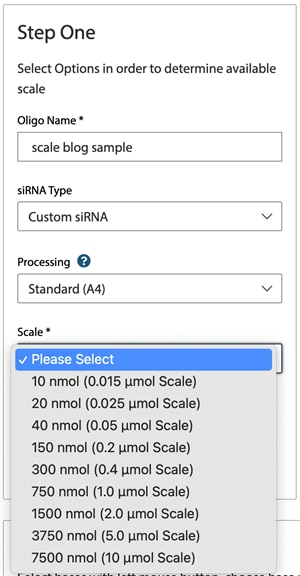Understanding the difference between scale and yield is important when ordering RNA or DNA oligos through our custom synthesis services, so experiments can be planned based on how much product is expected.

While our patented 2’-ACE chemistry offers unprecedented quality, even for long sequences, there are no synthesis processes with 100% efficiency. When we talk about the scale of a custom synthesis request, we are referring to the starting size of the synthesis reaction, while the yield is the amount of final product that we expect to get out of the synthesis reaction. The synthesis scales are well-defined amounts because we know how much of the components we will be putting into the reactions. However, the yield will depend on the details of the request and can fluctuate with modifications, purification, and length. Similar to making lemonade, where you start with a specific number of lemons but the amount of lemonade yielded will depend on the juicing method and the characteristics of the lemons used. 
Figure 1
We generally report the synthesis scale in micromole (µmol) units and the yield in nanomole (nmol) units. For example, with our custom siRNA ordering tool, we have a drop-down menu for selecting the scale (Figure 1). Here we report that the 0.015 µmol scale will yield a final quantity of 10 nmol of product. The yields given in this menu are based on unmodified siRNA sequences, and modifications may decrease this yield.
There are several factors that can decrease the expected yield of a particular synthesis, including:
- Processing options
o Additional purity can be achieved with HPLC, PAGE, or in vivo methods.
- Modifications
o Internal, 3’ and 5’ end, including fluorophores, spacers, chain terminators, and more.
o If another modification is needed, please reach out to Scientific Support.
- Length
o As the oligo length increases, the expected yield decreases.
o Length options will vary based on the synthesis scale.
- Secondary structure
o Sequences high in secondary structure can complicate quantification and decrease yield.
o Homopolymeric regions can decrease yield and feasibility. Please contact Scientific Support for an assessment if your oligo contains these repetitive elements.
We can also provide custom synthesis quotes with guaranteed yields and at larger scales than those available through our website tools. For this service, or any questions regarding scale and yield, please reach out to us in Scientific Support.

